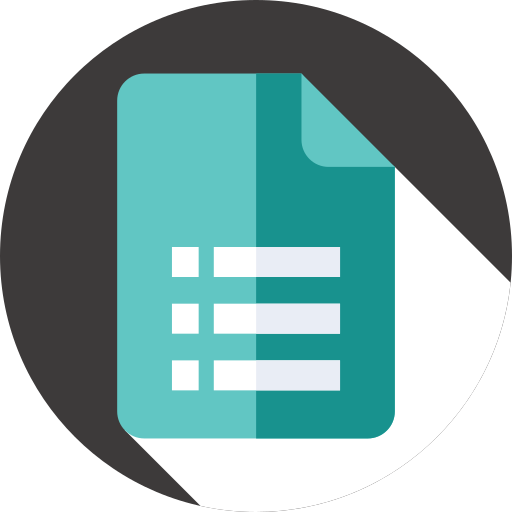Understanding Current Industry Standard Software Functionality for Security
08-Apr-2025
In the fast-paced digital age of today, data security and integrity are accorded the utmost priority, especially in sectors like biotechnology, pharmaceuticals, and healthcare. These sectors handle sensitive data that directly affects public health and safety, and therefore, regulatory compliance is the path to follow. One such regulatory demand is 21 CFR Part 11 Compliance, which is a regulation imposed by the United States Food and Drug Administration (FDA) that oversees electronic records and electronic signatures. Professionals must know industry-defined software features about security, particularly those meeting 21 CFR Part 11 Compliance, to maintain data integrity, compliance with regulations, and investor trust.
What is 21 CFR Part 11 Compliance?
21 CFR Part 11 Compliance refers to the FDA regulation of electronic records and electronic signatures. Signed into law in 1997, it ensures that electronic records are as accurate and reliable as paper records. The rule further requires that electronic signatures be as binding as handwritten signatures. The rule applies in FDA-regulated industries like pharmaceuticals, medical devices, and biotechnology, where data accuracy and security are crucial.
In order to achieve 21 CFR Part 11 Compliance, business companies must employ software solutions that have clearly defined features such as audit trails, data encryption, access control, and validation processes. While such features allow companies to become compliant with regulations, they also bring enhanced security for the information and business efficacy.
Key Software Capability for Compliance and Security
Audit Trails
Audit trails form a cornerstone of 21 CFR Part 11 compliance. It has a date-stamped, chronological log of all that is done to electronic records, including who looked at the data, what was altered, and when these activities were done. This functionality gives transparency and accountability so that inconsistencies or unauthorized modifications can be tracked easily. New software applications have robust audit trail capability, and organizations can utilize it to offer data integrity and demonstrate compliance in regulatory audits.
Access Controls
Access controls block unauthorized users from accessing sensitive data. 21 CFR Part 11 compliance regulations require organizations to install role-based access controls (RBAC) that restrict access to the system to authorized staff only. Advanced software packages offer multi-level access controls where employees can see and access information about their designation. Two-factor authentication (2FA) and biometric authentication are provided features offering an added layer of protection, further securing electronic records.
Data Encryption
Data encryption is an essential feature for any software application intent on becoming 21 CFR Part 11 compliant. Encryption does not allow unauthorized access to personal data while it is in transit or resting. Encryption of data into an unreadable format minimizes the chances of data breaches and cyber-attacks. Industry software applications employ high-grade encryption algorithms such as AES-256 to provide absolute security.
Electronic Signatures
Electronic signatures constitute the most critical component of 21 CFR Part 11 compliance. Electronic signatures must be distinct for each individual, traceable, and linked with the respective electronic record. Electronic signature capability compliant with regulatory requirements is achieved from sophisticated software packages that render the signatures tamper-evident and acceptable in courts of law. Digital certificates and encryption keys are certain elements that also contribute to the integrity and authenticity of electronic signatures.
System Validation
System validation is likely to be the most significant 21 CFR Part 11 compliance requirement. System validation is referring to testing rather than making sure that software systems will always produce consistent and accurate results. The companies will need to document and validate software systems to make them compliant with the regulations. Most of the software solutions used in the industry already have validation tools built into them and make the process simple while reducing the risk of non-compliance.
Data Recovery and Backup
Loss of data has serious consequences, especially for regulated systems. 21 CFR Part 11 Compliance places a strong focus on backup and recovery procedures for the delivery of business continuity. Mature software solutions offer automated backup functionalities to allow organizations to take safe backups at different locations. In case of system failure or data loss, strong recovery procedures help restore information in a short time to minimize losses and downtime.
The Requirement to Keep Up-to-Date
The regulatory environment keeps evolving, and businesses must remain aware of the new industry practices and software functionality to stay 21 CFR Part 11 compliant. Not complying can cost businesses dearly in the form of hefty fines, loss of reputation, and even litigation. When businesses invest in the latest software packages with security and compliance being considered, they are not merely being compliant; they are gaining a competitive edge in the marketplace as well.
Secondly, the implementation of industry-standard software capabilities gives organizational cultures a bias towards openness and accountability. Employees are more aware of having to safeguard information, the impact of which is enhanced practice and less possibility of human errors. This implies better overall operating efficiency, and it also helps in building customer, partner, and regulatory trust.
Conclusion
As information is the greatest asset of our era, its security and integrity are no longer an option but a prerequisite. For FDA-regulated companies, 21 CFR Part 11 Compliance is a mandatory requirement that has to be met. By education and implementation of newer industry-standard software elements of security, firms can become compliant, secure confidential data, and build a firm platform of credibility and trustworthiness.
From audit trails and access control to encryption and electronic signatures, these are not merely a regulatory necessity—but the best line of defense for guaranteeing the future success of your firm. As technology continues to evolve at ever-accelerating rates, it will become ever more critical to be ahead of the curve and in command of compliance in a more competitive, more regulated environment to succeed.
Recent Posts

Impact of 2024 HCPCS Updates on Healthcare Providers
16-Aug-2024
The 2024 Guide to Employee Motivation
21-Aug-2024
7 Ways to Improve Performance Management at Your Company
23-Aug-2024
Choosing the Best HR Tool for Education: 5 Things You Need to Know
28-Aug-2024
Payroll Records: A Guide to Retention and Disposal
04-Sep-2024
AI Limitations Why Certain Jobs Will Always Require a Human Touch
09-Sep-2024
How the New HIPAA Rules Impact Reproductive Health Care Providers
13-Sep-2024
Best Strategies to Manage Toxic Employees and Boost Team Morale
20-Sep-2024
Top 7 Common Coding Errors That Trigger Audits and How to Prevent Them
26-Sep-2024
How OSHA is Involved in Mandating Protections for Employees
14-Oct-2024
FDA Software Classification Guidance
22-Oct-2024
Stay Ahead of FDA Inspections: Best Practices for Managing Form 483 Citations and Warning Letters
24-Oct-2024
Best Practices to Reduce Validation Effort and Costs
06-Nov-2024
Best Practices for Medical Device Software Validation and Risk Management
14-Nov-2024
Training Strategies to Comply with EEOC New Harassment Standards
14-Nov-2024
Guideline On Computerized Systems and Electronic Data in Clinical Trials
17-Dec-2024
What is Human Factor Engineering in Medical Terms?
17-Dec-2024
What is the Objective of Supervisor Training?
24-Dec-2024



